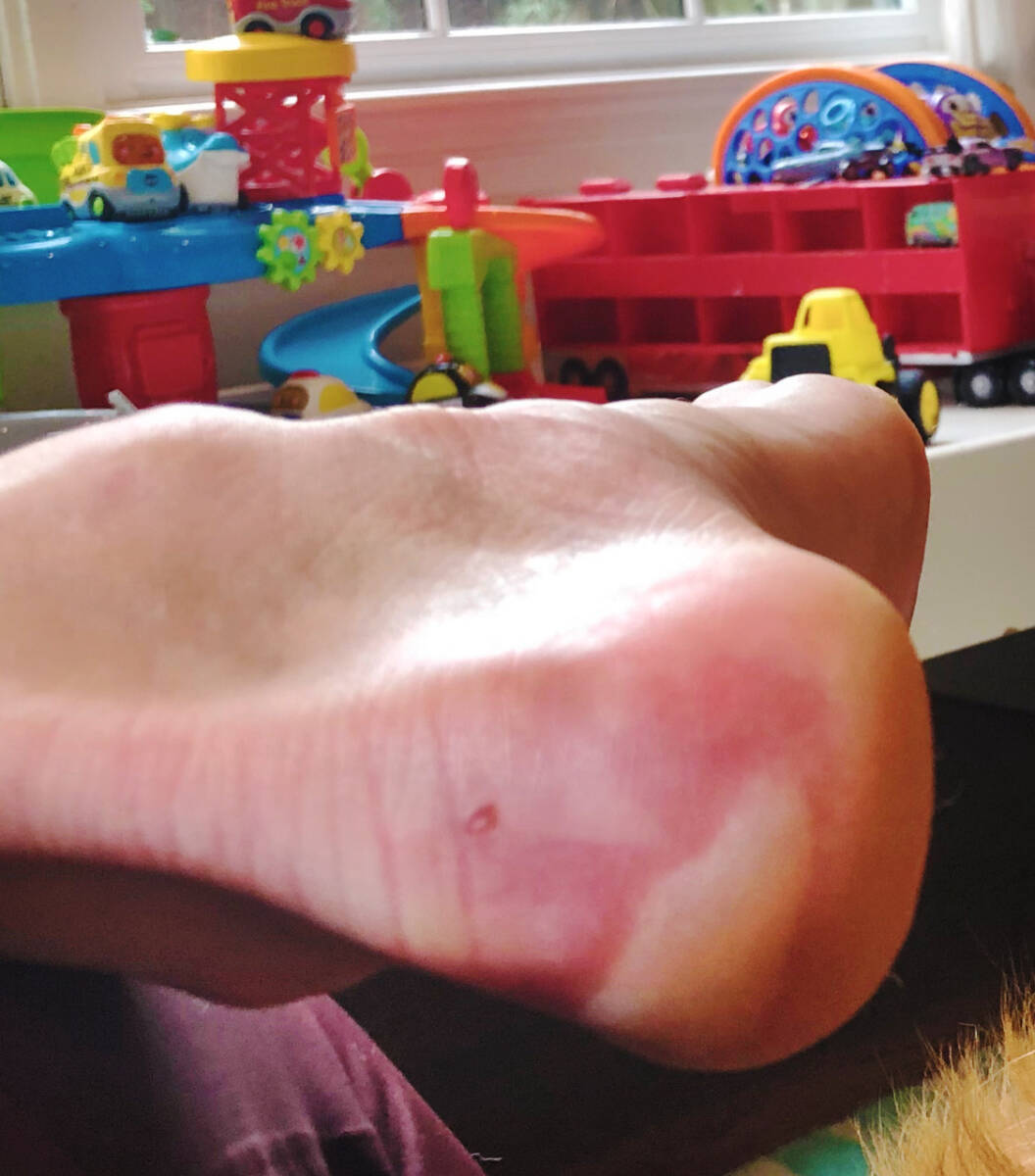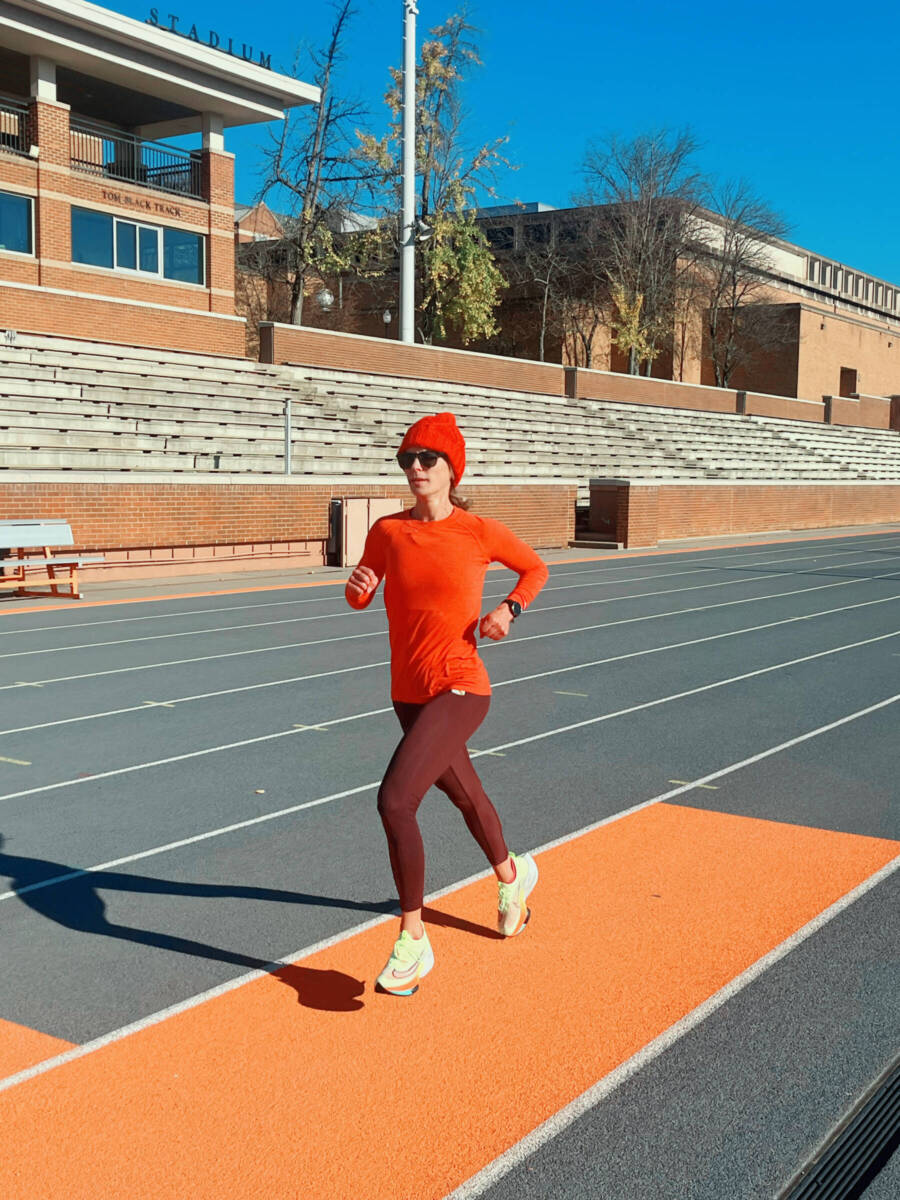Expert Tips: How to Breathe While Running in Cold Air
Running in colder temperatures can be hard enough but add on top of that the discomfort of breathing in cold air—and you may never want to step foot in your running shoes outside again. You know what I am talking about–that burning sensation you feel when breathing in cold air while running.

Sometimes you may feel chest tightness. You may even start coughing. And you’ll probably start wondering if the benefits of running outweigh the risks of whatever may be happening to your respiratory system.
Related: Your Winter Hydration Plan
Never fear, the good news is if you have healthy lungs and do not suffer from respiratory conditions, running in colder weather, even in extreme cold, isn’t unsafe for you—especially if you take the proper precautions.
I got with and Dr. Melanie Connell, DPT , who specializes in breathe techniques, and Dr. Melanie C. Prior, MD to share tips on how to breathe while running in cold air, so you can keep up those cold-weather runs and keep chasing those spring goals.
In this article, I will cover:
- Why does it hurt to breathe when running in cold air?
- How do you breathe in cold weather while running?
- What is too cold to run outside?
- And 4 expert tips for breathing while running in cold air
Let’s go!
Related: Can You Go Running with a Cold?
Why does cold air hurt when I run?
When you breathe in cold air, the lungs get inflamed, causing the muscles around the airways to tighten and narrow. Mucous can also be secreted making it harder to breathe. This is what makes your chest feel tight or burning and it hard to breathe in the cold, according to the American Lung Association.
For more people, following the below tips like covering your mouth, will remedy the problem. If you have difficulty breathing or wheezing, check with your doctor as you may have exercise-induced asthma triggered by cold dry air. This happens to my husband every winter now in the colder months following a bad upper respiratory infection. For him, he needs to use a rescue inhaler before running.
Learn more about how to manage these asthma symptoms in my article.

Exercise-induced asthma or exercise-induced bronchoconstriction (EIB) is when asthma symptoms begin with exercise such as coughing and wheezing, chest tightness, and shortness of breath. If you have difficulty breathing, stop running and seek medical attention.
Why do I struggle to breathe when running in cold air?
You may wonder why you can be outside playing with your kids and have no problem breathing in cold temperatures. Activities that raise your heart rate like running cause your respiratory system to work harder. You need more oxygen to your working muscles and more carbon dioxide out of your body.
To do this, your body increase its breath rate, which means you are taking in more of the irritating cold air. This can then inflame and constrict the airways, making it hurt or feel hard to breathe.
But the solution isn’t to quit running outside in cold fresh air, which has a host of mental and physical health benefits! It is to run outside in cold air PREPARED.
Is jogging in cold weather bad for lungs?
Running in cold winter weather is not bad for the lungs, unless you have something like chronic obstructive pulmonary disease (COPD) or chronic lung conditions.
That said, there are some conditions in which you do not want to run outside.
How cold is too cold for your lungs to run?
According to Dr. Prior, it’s safe to run in cold weather up to -15 degrees Fahrenheit. If it is colder than that, you run the risk of irritating your lungs.
Dr. Prior suggests avoiding intense exercise in subzero temperatures, keeping your runs short and easy on very cold days. “Avoid early morning or later evening when it is dark,” says Dr. Prior. “In sub-zero temperatures, be sure to cover as much skin as possible, limit prolonged exposure, and stay close to home.”
Related: How Cold is Too Cold for Stroller Running?
So, how do you breathe in cold weather while running?

If you are running in cold temperatures, you want to feed your lungs moist, warmer air than what’s outside. Here’s how to breathe while running on a really cold day, according to Dr. Connell.
Related: Can You Train for a Marathon on a Treadmill?
4 Experts Tips for Running While Breathing in Cold Air
Maintain normal breath.
Running in cold weather shouldn’t change your breathing strategy that much, says Dr. Connell. You don’t want to avoid taking deep breaths, giving your body the oxygen it needs to work. Short quick breaths limit the amount of air you take in and will only make you feel light-headed and fatigued. Instead, maintain your deep diaphragmatic breaths you normally use when running.
Cover your nose and mouth.
The key to running in cold conditions is wearing a face mask like a scarf, buff, or neck gaiter to filter the cold air—warming and humidifying it. This will reduce the effects of cold air on your lung function.

Here are some awesome face coverings for runners:
- Smartwool Merino Thermal Reversible Neck Gaiter– $32
- Lululemon Run For It All Neck Warmer – $20
- Turtle Fur Neck Warmer – $25
- Skida Alpine Neck Warmer – $30
- Tracksmith Inverno Neck Warmer – $32
Breathe through your nose.
Inhaling through your nasal cavity can also warm and humidify the cold air more than breathing in large amounts of cold air through your mouth. For this, you would breathe in through your nose and out your mouth.
Nasal breathing while running is hard and may feel uncomfortable. You can always do it in intervals to decrease the amount of cold, dry air you are taking in.
Slow down.

If wearing a face covering or breathing in through your nose makes you feel like you aren’t getting enough air, or you find yourself gulping air more or breathing in short chopping breaths, Dr. Connell recommends reduces your run. “Consider lowering the intensity of the run to adapt better.”
If you do this, you are also able to practice nose breathing which can have benefits for runners such as the release nitric oxide “which is necessary to increase carbon dioxide (CO2) in the blood, which, in turn, is what releases oxygen,” according to recent studies such as one in International Journal of Kinesiology and Sports Science.
If it is too cold to run outside, I suggest securing access to a treadmill. Read more about treadmill workouts and how to train for a marathon on a treadmill here.
Of course, I am not a doctor, so any concerns about your health, talk to your health care provider.
However, I hope these tips about running in colder weather help you maintain your physical activity to stay healthy and chase those spring goals!






